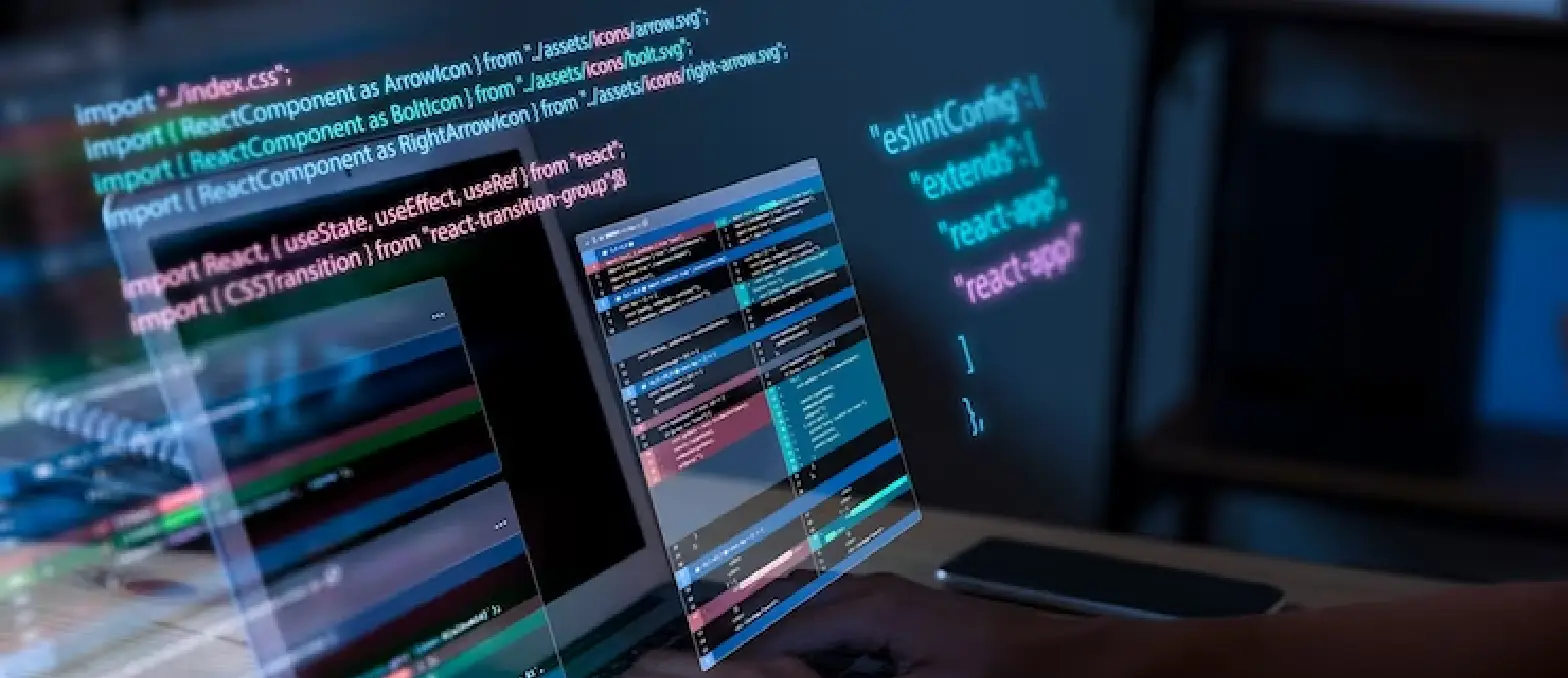Table of Contents
Business communication is vast and varied. But there’s one name that shines brightly: ANSI X12. So what’s that? ANSI X12 is a standard for how businesses communicate electronically, mainly in transactions. A group called the Accredited Standards Committee X12 designed it. Their goal? Make electronic communication between industries clear and unified, especially for Electronic Data Interchange (EDI). It makes communication easy, quick, and safe. If your business is ANSI X12 Compliant, it’s like you and others speak in a common language. Also, things just work smoothly.
The Impact of ANSI X12 in EDI
Switching to this system wasn’t just a tech shift. It was about adopting a system that ensured effective, clear, and steady business communication. When ANSI X12 came around, it changed the EDI scene.
For firms, ANSI X12 had many plus points. One, it cuts down mistakes. With a shared format, the chance of data errors during sharing dropped. Also, transactions became quicker. With all using the same system, there were no hold-ups because of data format changes.
A key point was not only standardizing but also integrating. Being ANSI X12 Compliant lets firms integrate their internal tools, like stock checks and bookkeeping, into outside EDI services. This tie-up made things run more smoothly and lowered manual tasks.
As time passed and more firms saw its worth, the ANSI X12 became a byword for top-notch electronic data sharing. Fields from health to banking and shops to transport began using this standard. Also, the wide effect was clear. Not only were transactions quicker and spot-on, but trust between trading partners rose. Data from an ANSI X12 Compliant partner was always steady and trusted.
The benefits of being ANSI X12 Compliant
The biggest advantage is consistency. Being a standard compliant means businesses use one electronic format. This means fewer mistakes and more teamwork.
This easy communication leads to faster work times. Also, businesses don’t waste time changing data. They can order goods, bill customers, or plan their work faster. In today’s world, fast often means more profit.
Then comes integration. If a business is ANSI X12 Compliant, it can work smoothly with EDI service providers. Systems work together, automating tasks like checking stock or handling money. Also, fewer manual steps mean fewer mistakes.
Also, being a Compliant shows a business’s quality. Partners see a business that’s reliable, trusted, and forward-looking.
Empower Your Business with Our Cutting Edge EDI solutions
The Key Components of ANSI X12
Each part of ANSI X12 has its role in electronic data exchange (EDI). The biggest part is the “Interchange Control Structures, ” which define the start and end.
Inside this, we find “Functional Groups.” Each one relates to something specific, like payment or delivery details. Every group has a start, called a header, and an end, named a trailer. This keeps data in order.
Going deeper, within these groups, there are “Transaction Sets.” These are individual transactions. For example, a bill or an order form would be one transaction set.
To make these sets clear, they use “Segments.” Each segment holds particular details set by “Data Elements.” These tiny parts, the data elements, hold real information, like a product number or cost.
Vital terminologies to understand for compliance
Knowing some important terms is good if you want to be ANSI X12 Compliant. As you work with EDI providers and learn about EDI, you’ll come across:
- Segment: As we talked about, a segment groups related data elements. It’s like a line in the EDI language.
- Delimiter: A special character that shows where something starts or finishes. In ANSI X12, delimiters split segments and data elements to keep data organized.
- ISA and IEA: The ISA is the “Interchange Control Header,” and the IEA is the “Interchange Control Trailer.” They start and finish the whole exchange. They make sure EDI data is whole and correct.
- GS and GE: These are like ISA and IEA but for each functional group. The “Functional Group Header” (GS) starts, and the “Functional Group Trailer” (GE) ends.
- ST and SE: These mark a transaction set’s beginning (ST) and finish (SE). They help point out single transactions in a group.
- Qualifier: A short code or detail that gives more meaning to a data element. For example, it can show if an ID belongs to a buyer or seller.
Beginning Your Journey: Preliminary Steps
Establishing a core team for ANSI X12 integration
So, who should be on this team?
First, you need an EDI expert. This person knows the world of electronic data, especially EDI 834. They lead the way, ensuring the company follows the right tech paths.
Then, you need an IT person. When adding a new data standard, tech hiccups will pop up. This person helps fit the new with the old and fixes any tech bumps.
A project manager keeps things on track. They make sure goals are hit and help everyone work together. With the manager leading, the work is clear and focused.
Also, someone from operations or a similar business area is helpful. They get the everyday tasks and can give useful feedback. Also, their thoughts make sure the ANSI X12 work matches business aims.
Reviewing current data exchange protocols and systems
Before trying something new, seeing where you are now is good. This means looking at the current data methods you use.
Start with a check. How do we exchange data now? Do we use mail, fax, or a tech method? It’s key to know your start. Also, it lets us see the size of the change and if we’re ready for the new work.
Then, see how good your system is now. Are mistakes common? How smooth is data moving, mainly for EDI 834 services? This shows where to focus and fix things.
With a full picture of the present, planning for ANSI X12 becomes easier. It’s like making a list before a big task. We see what we have, what to keep, what to toss, and where to boost things.
This phase is also good for talking to vendors and partners. Knowing what they can do and need helps the new workflow well. After all, EDI and being ANSI X12 Compliant is about better transactions. This step ensures we and our partners agree.
Partnering with the Right Vendors
Choosing vendors experienced with ANSI X12 standards
When you become ANSI X12 Compliant, picking the right vendors is vital. The vendors you work with help ensure you switch to the X12 standard without issues.
Vendors who know the ANSI X12 standard understand it deeply. Also, they’ve tackled problems related to this standard before. Because of this, they offer great advice. This helps reduce mistakes and speeds up the switch to the new standard.
Also, vendors who know their stuff keep track of changes to the X12 standard. If you aim to comply, knowing these updates is important. With a smart vendor, you stay updated without stress.
Transitioning smoothly with vendor support
Getting the right vendor is only step one. Their real value shows when you start the switch. As companies change to be ANSI X12 Compliant, good vendor help can make things easier.
They give training and resources. Even though the standard makes data sharing easier, starting can be hard. Training, workshops, and vendor guides make learning and using the new system easier for everyone.
Plus, when switching, there might be tech issues. This could be fitting the standard with what you already use or fixing unexpected problems. A vendor who answers fast helps fix issues quickly, so business goes on as usual.
And after the switch? Your connection with the vendor continues. They offer more help, regular checks, and updates.
Implementing ANSI X12 Standards: A Step-by-Step Approach
The first step to becoming ANSI X12 Compliant is shifting to EDI formats in line with the ANSI X12. This move is crucial for all other steps. So, what’s involved in this shift?
Electronic Data Interchange (EDI) lets businesses share data electronically in a set format. The ANSI X12 works for many industries.
Start by looking at your current EDI system. Know what you use now and spot gaps or places that don’t match. Next, pick the EDI tasks you need for your work. For example, do you work with supply chains, health claims, or shipping? Each field has its own ANSI X12 EDI tasks.
After that, start the mapping step. This means matching your company data to the EDI. You want each data piece to fit the ANSI X12 style. Using software can help a lot here. It assists in data mapping and makes sure it’s right.
With mapping done, it’s time to move. Shift your data to the new style, ensuring it fits the ANSI X12. This step can take time, but it’s key. Also, the result is smoother work and better data.
Testing and validation processes
There’s more to do once you’ve moved your data to fit the ANSI X12. It’s vital to test and validate.
First, do an internal test. Here, see if the moved data works well in your system. It’s a quick way to check your data shift. Use EDI software to speed up this check and mark any mistakes.
After that, test with partners. This step ensures the EDI standards you added work with your partners’ systems. The main aim of being ANSI X12 Compliant is better B2B communication.
Swap test files with partners, copying real work conditions. It’s a way to spot any slow spots or issues early on. When both sides are happy with the test results, start the final step: real data sharing. Start small and add more as trust grows.
Efficient Data Exchange Starts Here
Continuous Monitoring and Updates
The Importance of Regular Audits to Ensure Ongoing Compliance
Becoming ANSI X12 Compliant is a great step. But the work doesn’t stop after the first setup. Staying compliant needs ongoing attention. Here’s why regular checks matter.
Businesses should perform checks to keep their systems in line. These checks pinpoint any departures from the ANSI X12 rules. They highlight spots that might need more attention due to business shifts.
These checks review every EDI transaction. They make sure every data share matches the rules. Regular checks don’t just maintain ANSI X12 Compliance; they also boost data exchange quality. Mistakes can create big problems, hurting finances and partnerships.
Staying Updated with Evolving ANSI X12 Standards
Tech and rules always change. Today’s top method might be old news tomorrow. The ANSI X12 rules follow this pattern. They change based on what industries need and tech upgrades.
Why should businesses keep up? Being ANSI X12 Compliant now doesn’t mean forever. As rules shift, businesses should too. Falling behind creates problems like errors and fines.
To manage this, businesses should have a team or a department that monitors for ANSI X12 updates. But just watching isn’t enough. This team should also join workshops and seminars and connect with EDI solution providers to stay informed.
If there’s a new change, businesses should study it. Also, they need to see how it changes their current methods and what they should adjust to match the latest rules. Sometimes, this means adjusting data or even changing the whole EDI setup.
Employee Training and Education
A knowledgeable team is your best shield for a robust ANSI X12 Compliant system. Think of using modern tools, but the team isn’t confident about how they work.
Being standard-compliant isn’t just about tools; it leans on the staff working with them daily. So, giving your team the right know-how is crucial. These help keep your team’s knowledge sharp. For newcomers, it’s a welcome guide into EDI norms. For the experienced, it’s a timely update.
Offering Resources and Workshops for Continuous Learning
A great way is by offering various study resources. This includes online sites, e-books, video lessons, and live online classes. These let your team learn quickly, focus on tough topics, and stay informed.
Also, workshops are vital for active learning. Unlike classic training, workshops seek full involvement. They give real problems and push for solutions. This style encourages teamwork and critical thinking.
So, where to find these workshops? Linking with top EDI providers can help. They often organize events covering new trends and solutions in EDI. Teaming up with them not only aids in learning but also helps in making business contacts.
Having an inside knowledge-sharing space is beneficial too. This space can have sessions where everyone discusses new ideas and methods. This promotes a shared learning environment.
Predicting the Evolution and Future Relevance of ANSI X12
More businesses are moving online. So, they must communicate with each other simply, unified. That’s where ANSI X12 shines. It lets businesses share information easily. But what can we expect from it moving forward?
Guessing where tech will go isn’t always easy. Yet, ANSI X12’s role can’t be ignored. As more businesses embrace digital change, sharing data is key. ANSI X12 provides a proven, standard way to share data without hiccups.
Top EDI providers highlight ANSI X12’s importance. They keep pouring time and resources into making it better. Not just making small changes but thinking of big, bold new ideas. They’re blending new tech with this proven system.
A big plus for companies? These providers’ deep dedication to ANSI X12. Their fresh ideas make sure as tech changes, ANSI X12 keeps pace. It will change with the times, just like businesses do.
Want an effortless data exchange process?
Connect with A3Logics, an EDI service provider to revolutionize your data exchange
Conclusion
Today, data transactions are everywhere. Their number and value are growing fast. As this happens, we must set ways for data to move between places. This makes being ANSI X12 Compliant very key.
Being standard-compliant is the solution. It means that all businesses, big or small, use the same online rules. It makes things clear and fast. Plus, it helps businesses grow. Being ANSI X12 Compliant means more than just following rules in our digital time. It means joining a worldwide digital group where all data fits together well.
Using the ANSI X12 way is the first step towards doing great online. Don’t just watch the future; build it with A3Logics. Make this a top task now and lead your business to online success.
FAQs






